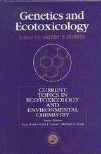Papers in the Biological Sciences

Valery Forbes Publications
Document Type
Article
Date of this Version
2006
Abstract
The present experiments are part of a larger study designed to investigate the influence of husbandry parameters on the life history of the ramshorn snail, Marisa cornuarietis, in order to identify suitable husbandry conditions for maintaining multi-generation populations in the laboratory for use in ecotoxicological testing. In this paper we focus on the effects of a combination of food types and feeding frequencies (i.e., the frequency with which the snails were offered food) on juvenile growth and survival at different temperatures. Offspring produced in the laboratory by wild specimens of M. cornuarietis, from Puerto Rico, were used to test the effects of three types of food (lettuce, alginate with fish food, alginate with snail mix) fed at three frequencies (given ad libitum on 4/4, 2/4, or 1/4 d) on juvenile survival and growth. The 4-d feeding regimens were repeated four times, giving a total of 16 d for the experiments. The experiments were conducted at two temperatures (22 and 25 degrees C) under a 12 h light:12 h dark photoperiod. Juvenile growth rates increased with increasing feeding frequency for all food types. The most rapid growth rates occurred in the high-frequency lettuce treatments and the slowest growth rates in the low-frequency lettuce and alginate with snail mix treatments. Juvenile snails grew faster at 25 degrees than at 22 degrees C, and mortality was about twice as high at the lower temperature. Growth rates were used to provide a rough estimate of time to maturity, which was determined to take about twice as long at 22 degrees than at 25 degrees C. The results showed that lettuce is the best food if supplied in abundance, but effects on growth are very dependent on feeding frequency and temperature. We conclude that 25 degrees C is a more appropriate temperature for maintaining populations than 22 degrees C, that lettuce provides a suitable food source, and that food should be supplied continuously for husbandry and toxicity testing of populations of M. cornuarietis.


Comments
Published in Invertebrate Biology 125(2): 106–116. Copyright 2006 The Authors. Published by The American Microscopical Society, Inc. DOI: 10.1111/j.1744-7410.2006.00045.x Used by permission.